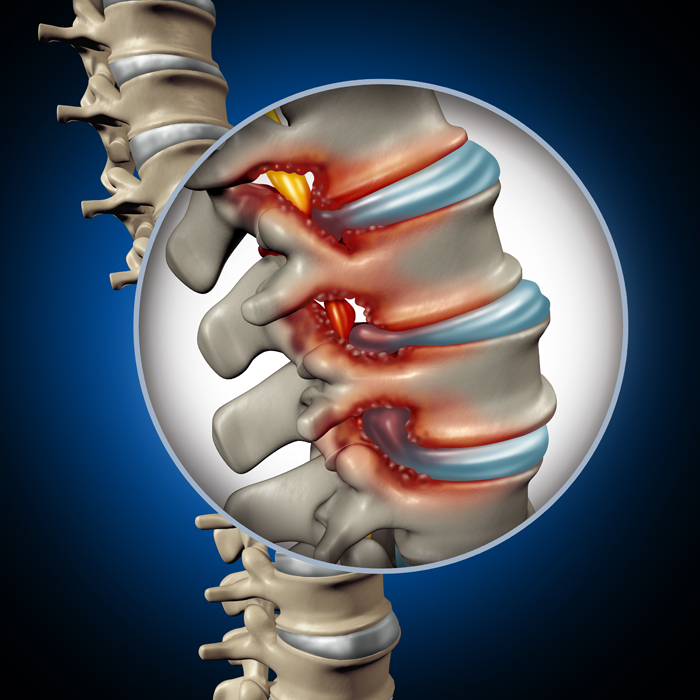Spinal Stenosis Treatment in Karol Bagh, Delhi
Introduction
Spinal stenosis is a narrowing of the gaps inside your spine that can compress the nerves that go through it. Spinal stenosis is common in the lower back and neck.

What are the Different Types of Spinal Stenosis?
There are two types of spinal stenosis:
- Cervical stenosis: The narrowing occurs in a portion of the spine in your neck in this disease.
- Lumbar stenosis: The narrowing of the spine in your lower back occurs in this condition. It is the most well-known form of spinal stenosis.
What are the Symptoms of Spinal Stenosis?
Symptoms of spinal stenosis depend on the type of spinal stenosis:
Around the neck (cervical spine):
- Torment in the neck
- Problems with walking and balance
- Hand, arm, foot, or leg weakness
- Shivering or heaviness in a hand, arm, foot, or leg
- In severe cases, bowel or bladder fractures may occur (urinary desperation and incontinence)
Lower back pain (lumbar spine):
- Pain in the back
- Weakness in a foot or leg
- Tormentor squeezing in one or both legs when standing for long periods or walking, which often helps when you rotate forward or sit
- Trembling or heaviness in a foot or leg
What Causes Spinal Stenosis?
Bone overgrowth: Severe damage from osteoarthritis on your spinal bones can cause the formation of bone spikes, which can lead to the formation of the spinal trench.
Plates that have herniated: The tiny pads that act as protections between your vertebrae will often dry out as you get older.
Tendons that have thickened: The extreme lines that aid in keeping your spine's bones together might get solid and thicker with time.
Tumors: Unusual developments can occur inside the spinal cord.
Spinal injuries: Automobile crashes and other injuries can result in the separation or cracking of at least one vertebrae.
When to See a Doctor for Spinal Stenosis?
If you experience the symptoms of spinal stenosis mentioned above, your primary care physician will begin by obtaining a clinical history, doing an actual test, and observing your progress.
Request an appointment at Apollo Spectra Hospitals, Karol Bagh, New Delhi
Call 1860 500 2244 to book an appointment
What are the Risk Factors Associated with Spinal Stenosis?
Many patients with spinal stenosis are above the age of 50. Although degenerative changes can induce spinal stenosis in younger people, other causes must be considered. These include injury, intrinsic spinal deformity such as scoliosis, and a genetic infection that affects bone and muscle development throughout the body. These reasons can be distinguished via spinal imaging.
What are the Possible Complications of Spinal Stenosis?
Untreated severe spinal stenosis may rarely progress and cause long-term -
- Weakness
- Problems with Balancing
- Incontinence
- Motion Impairment
How Can You Prevent Spinal Stenosis?
You can't prevent lumbar spinal stenosis since virtually everyone gets some degree of osteoarthritis of the spine by the age of 50. However, you may have the option of lowering your risk. Here are a few methods to maintain your spine healthy:
- Get your regular exercise.
- Maintain a good posture.
- Live a healthy life.
What are the Treatments Available for Spinal Stenosis?
First-line treatments:
Your primary care physician will most likely start by prescribing medication to treat spinal stenosis. Cortisol injections into your spinal segment can reduce swelling. Nonsteroidal anti-inflammatory medicines (NSAIDs) can help to alleviate pain. Your doctor may also recommend non-invasive therapy to help strengthen and stretch your muscles.
Surgery:
If you have severe pain or disability, your primary care physician may recommend surgical treatment to address spinal stenosis. Spinal stenosis is treated with a variety of surgical procedures:
- The most well-known type of medical treatment is laminectomy. A doctor removes a portion of the vertebrae to allow greater space for the nerves.
- Foraminotomy is a surgical procedure that enlarges the area of the spine where the nerves escape.
- The spinal combination is typically used in more problematic situations, especially when many spine levels are involved. For connecting the affected bones of the spine, bone joints or metal implants are used.
Request an appointment at Apollo Spectra Hospitals, Karol Bagh, New Delhi
Call 1860 500 2244 to book an appointment
Conclusion
Some individuals with spinal stenosis may not show any symptoms. Others may experience agony, shivering, death, and muscular weakness. After some time, manifestations may worsen. Spinal stenosis is frequently caused by mileage changes in the spine associated with osteoarthritis. Appropriate therapy is critical in managing spinal stenosis.
The two most common and successful options are dependable chiropractic and exercise-based recovery sessions.
Regardless of the non-invasive treatments used, the only approach to permanently cure Spinal Stenosis is through medical surgery.
The following are the most well-known risks associated with Spinal Stenosis surgery:
- Contamination
- Blood clot
- A rip in the tissue that protects the spinal cord
Symptoms
Our Doctors
DR. SORABH GARG
MBBS, DNB (Anaesthes...
| Experience | : | 16 Yeras Experience |
|---|---|---|
| Speciality | : | Pain Management... | Location | : | Karol Bagh |
| Timings | : | Mon - Sat : 9:00 AM ... |
Our Top Specialities
NOTICE BOARD
CONTACT US
CONTACT US
 Book Appointment
Book Appointment



.svg)
.svg)
.svg)
.svg)








